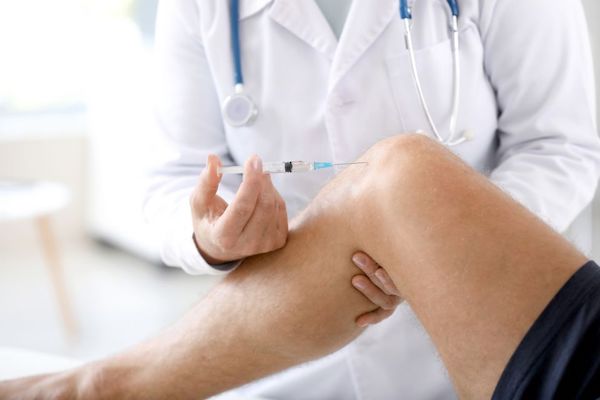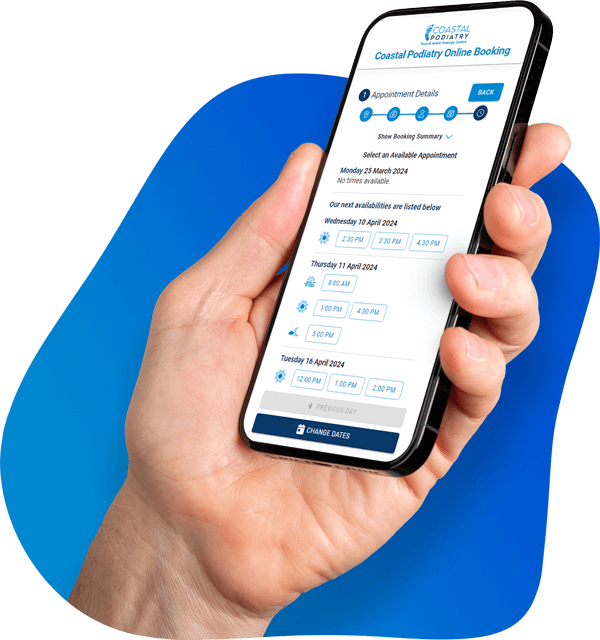Inner knee pain can be frustrating, especially if it’s stopping you from staying active or doing everyday tasks comfortably. Knee pain on the inside, or medial side, of the knee, often results from cartilage wear or injuries like twists, falls, or even just overuse. The knee is one of our most complex joints, with four bones, four ligaments, tendons, two menisci, and cartilage all working together – making it especially prone to injury.
Here’s a rundown of the common causes of inner knee pain and ways to help ease the discomfort.
Why Does My Inner Knee Hurt?
1. Osteoarthritis (OA)
Osteoarthritis is a degenerative condition where cartilage breaks down, causing bones to rub together. If your inner knee aches when climbing stairs, sitting down, or even just standing up, osteoarthritis could be the culprit. It often worsens throughout the day and is more common for those with a ‘varus knee,’ which places extra strain on the joint over time.
2. Rheumatoid Arthritis (RA)
Rheumatoid arthritis is an autoimmune disease that brings joint pain, swelling, and stiffness. While RA may affect the entire knee, it can make the inner side especially sore. Symptoms might be worse in the morning, gradually improving as the day goes on.
3. Medial Collateral Ligament (MCL) Injury
The MCL stabilises the knee on the inner side. Injuries to this ligament often come from a knock or twist, which is especially common in contact sports. Symptoms of an MCL injury include swelling, instability, and sometimes a ‘popping’ sound at the time of the incident. You may feel wobbly when walking or experience pain when moving your knee.
4. Medial Meniscus Injury
The meniscus is a type of cartilage that acts as a cushion between the thigh and shin bones. Twisting or straining the knee during sports can tear this meniscus. Tears can range from minor to severe, with common symptoms like sharp pain when twisting, stiffness, and even the sensation that the knee is ‘locking.’
5. Pes Anserine Bursitis
A bursa is a small fluid-filled sac that reduces friction in the knee. The pes anserine bursa lies on the inner knee and can become inflamed due to overuse, resulting in a condition called pes anserine bursitis. Contributing factors include osteoarthritis, obesity, and tight hamstring muscles.
6. Medial Plica Irritation
Plica are tiny folds in the knee joint’s lining. The medial plica can become irritated from overuse, particularly from repeated bending or strenuous activities. If the folds thicken, they may get trapped between the bones, causing dull inner knee pain and sometimes a cracking or locking feeling.
7. Other Injuries and Trauma
Direct trauma, like a fall or blow to the knee, can bruise the bone and cause lingering pain. Other conditions, such as saphenous nerve irritation, avascular necrosis, or wear of the joint between the patella and femur, may also cause discomfort.
Common Symptoms of Inner Knee Pain
If you’re dealing with inner knee pain, you might notice some or all of these symptoms that can help pinpoint the issue. Here are some common signs:
- Stiffness: Stiffness in the knee, especially after long periods of inactivity, can be a sign of arthritis or inflammation. Many people with arthritis feel more stiffness in the morning or after sitting for long periods.
- Popping or Clicking Sounds: Hearing a popping sound in the knee is often associated with injuries to the meniscus or ligament. This can happen during twisting movements or sudden direction changes, especially in sports.
- Instability: A feeling of instability or “giving way” can indicate ligament damage, such as an MCL injury. This symptom often appears when walking, running, or putting weight on the knee.
- Locking or Catching: If your knee feels as though it’s locking up or getting “caught” during movement, it could indicate a tear in the meniscus or an issue with the medial plica.
Lifestyle Factors Contributing to Inner Knee Pain
By being mindful of these lifestyle factors, you can make adjustments that may help alleviate or prevent knee pain.
- High-Impact Sports: Activities like running, basketball, and soccer are tough on the knees. Repetitive stress and impact can lead to ligament injuries, meniscus tears, and cartilage wear.
- Excessive Weight: Carrying extra weight puts added strain on your knees, accelerating the wear and tear of cartilage and increasing your risk of osteoarthritis.
- Improper Footwear: Shoes without adequate support can misalign your legs, forcing your knees to absorb more impact. This can lead to pain in both the inner knee and surrounding areas.
- Repetitive Movements: Jobs or hobbies that require repeated squatting, kneeling, or bending can lead to knee strain over time. This repetitive stress can irritate knee structures, leading to chronic pain.
Treating Inner Knee Pain
Minor knee injuries often respond well to at-home treatments, but prolonged pain might need medical attention.
Home Remedies
Try these steps to ease knee pain at home:
- Rest and Avoid Painful Activities – Give your knee a break.
- Use Crutches or Support – Keep weight off the knee.
- Ice Regularly – Apply ice for 20 minutes, three to four times daily.
- Compression Bandage – Wrap the knee to control swelling.
- Elevation – Rest your leg with pillows to reduce swelling.
- Gentle Stretches – Knee slides and other stretches help improve flexibility.
If pain persists for more than three days or if it worsens, we advise seeing a doctor.
Additional Treatments
When home remedies don’t quite do the job, doctors may recommend:
- Steroid Injections for osteoarthritis or pes anserine bursitis.
- Physical Therapy to strengthen and support the knee.
- Knee Braces for stability during activities.
- Surgery may be needed in cases of severe injuries, such as a torn meniscus.
Exercises for Inner Knee Pain
Strengthening the muscles around your knee, especially the quadriceps and hamstrings, can help prevent and relieve pain. Always warm up and stretch before and after exercise to protect your knees. Recommended exercises include:
- Leg Lifts – Great for building strength without knee strain.
- Stationary Biking – A gentle way to keep the joint moving.
- Swimming – Ideal for exercise without high impact.
Frequently Asked Questions
When Should I See a Doctor for Inner Knee Pain?
If your inner knee pain persists for more than a few days, especially if it worsens or doesn’t improve with rest and over-the-counter pain relievers, you should consider seeing a doctor. Other indicators include noticeable swelling, bruising, or a feeling of instability in the knee and difficulty bearing weight or moving your knee through its full range of motion.
Is Walking Bad for Inner Knee Pain?
Not necessarily. Walking and low-impact exercises like stationary biking help build strength in the quadriceps and hamstrings, supporting knee stability. Avoid high-impact activities like jumping or squats if they cause pain.
Is Heat or Cold Therapy Better for Inner Knee Pain?
Both heat and cold therapy can be effective for inner knee pain, but they serve different purposes. Cold therapy, such as ice packs, reduces swelling and numbs sharp pain immediately after an injury. It constricts blood vessels and helps limit inflammation. On the other hand, heat therapy, like heating pads or warm towels, can help relax and loosen tissues, improving blood flow and reducing stiffness, especially for chronic pain or muscle tension. It’s often beneficial to initially use cold therapy and switch to heat as the pain evolves.
Why Does My Inner Knee Hurt but No Swelling?
Conditions like osteoarthritis, medial meniscus injuries, and medial plica irritation can cause pain without swelling.
Why Does My Inner Knee Hurt Without Any Injury?
Knee pain without a clear injury might come from gradual wear and tear, as seen with osteoarthritis or rheumatoid arthritis, which can weaken and stress the joint over time.




